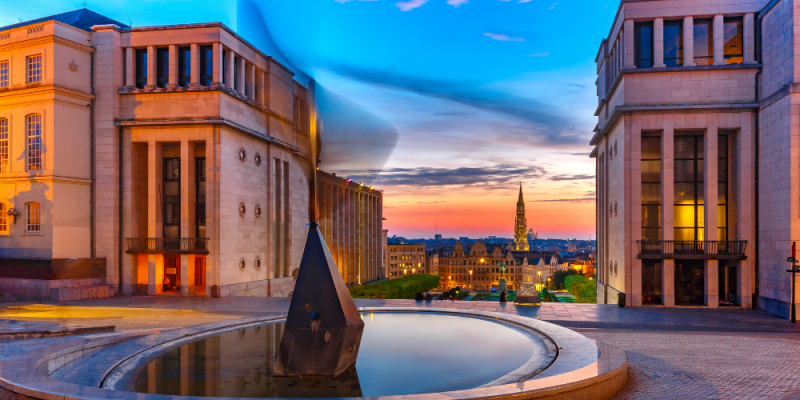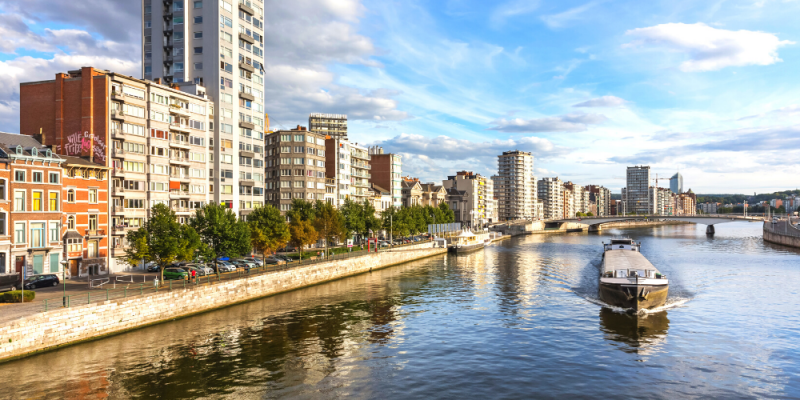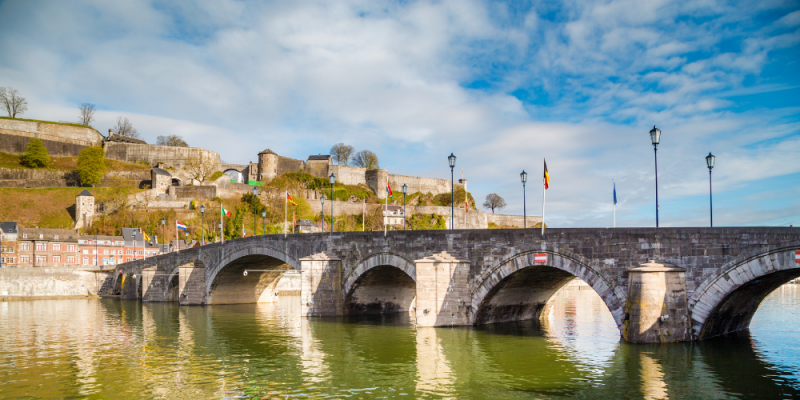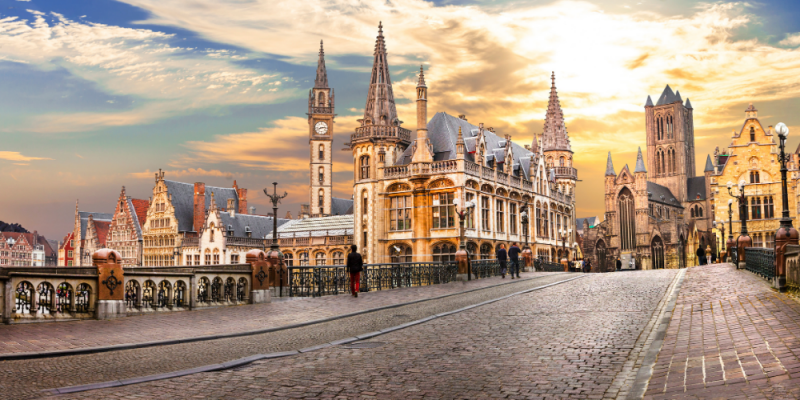If you know Lille, you know that its architecture is special and really deserves some attention. As much as the buildings and houses found in the different alleys of the Vieux-Lille and the rest of the city take us into a world apart, the great monuments and buildings of the city are also worth a visit. Here is a small, non-exhaustive list of buildings (and their small historical explanation) in front of which we must - absolutely - make a stop.
Ghent Gate and fortification complex
59021 Lille FranceThe Porte de Gand is a gate in Lille, part of the former Spanish city wall built between 1617 and 1621 when the city was expanded. It was classified as a historical monument in 1929. Coming from the centre of Lille, you can get there via the rue du Gand where you can see the other side of the gate than the one you see here in the picture. They are both "divided" into three parts.
Porte de Paris
59800 Lille FranceThe Porte de Paris is one of the gates of the former ramparts of the city of Lille. It was rebuilt at the end of the 17th century as a triumphal arch to celebrate the victories of Louis XIV and is sometimes considered a masterpiece of military art. Many statues are represented there, including Mars and Hercules. Two architects worked on it: one for the "entrance" side of the city and the other for the other side, the "exit" side.
The Lille Opera House
59000 Lille FranceThe Lille Opera House is a neo-classical-inspired theatre officially inaugurated in 1923. The facade of the Lille Opera House corresponds to the architectural canons of the belle époque in vogue since the Universal Exhibition of 1900. Its decor was entirely conceived and designed by Louis Marie Cordonnier. The building was renovated and reopened in 2004. The operas, concerts and dance performances that are performed here are intended to appeal to all audiences.
The Lille Chamber of Commerce
Place du Théâtre 59000 Lille FranceThe Lille Chamber of Commerce is a building built at the beginning of the 20th century to house all the services of the chamber of commerce created in Lille in 1715. It now houses the headquarters of the Chamber of Commerce and Industry of Greater Lille. Its 76m high belfry, in neo-Flemish style, is emblematic of the city of Lille. It is often referred to as the New Stock Exchange, as opposed to the Old Stock Exchange just opposite. If you're an entrepreneur planning to start your own business, this is the place to come. The CCI supports business creators, among others.
Lille's Old Stock Exchange
59000 Lille FranceLille's Old Stock Exchange, named after the building opposite the new Chamber of Commerce (or New Stock Exchange) in the 1910s, is one of the city's most prestigious monuments. It was classified as a historical monument in 1921 and 1923. Its courtyard is open to the public, you might even see tango demonstrations in the summer.
The Palais des Beaux-Arts de Lille
59000 Lille FranceThe Palais des Beaux-Arts de Lille is a municipal museum of art and antiques located on the Place de la République in Lille, in the Hauts-de-France region. It is one of the largest museums in France and the largest fine arts museum outside Paris in terms of the number of works on display. The works on display span all eras. The 4 key works not to be missed (according to the Beaux-Arts) are : The Concert in the Egg by Jerome Bosch, Study for the Madonna of Alba by Raphael, The Old/ The Time of Franscisco by Goya y Lucientes and The Feast of Herod by Donatello.
Hôtel des Postes de Lille
59013 Lille FranceOriginally, the Hôtel des Postes de Lille is an administrative building, rented to the Post and Telegraph services (1884). It was then refurbished and since 2012 it has housed a number of homes, a commercial area and a car park.
Palais Rameau
Lille FranceThe Palais Rameau (1878-1881) is a building in Lille designed by Lille architects Auguste Mourcou and Henri Contamine. It was classified as a historical monument in 2002. Its architecture presents a mixture of tradition (alternating bricks and white stones) and orientalism (Moorish style). The Palais Rameau was originally used for flower and fruit exhibitions. It was also used as a prison during the Second World War. Today there are still exhibitions organised in this place, but very few compared to its beginnings.
Citadel of Lille
Avenue Mathias Delobel 59800 Lille FRThe citadel of Lille is a military structure built in the 17th century for the defence of Lille. Named by Vauban himself the "queen of citadels", the military structure is remarkable for its size, the quality of its architecture and its current state of conservation. Established on the border with Flanders, it was part of a double line of strongholds between Gravelines, Dunkirk and Maubeuge-Rocroi. It marked the boundary of the famous Pré carré, designed by Vauban, comprising 28 fortified towns.
It is possible to visit it virtually on the citadel's website 🙂.
Would you like to discover a little more of the French city of the North? Schedule a short visit to Lille and include our urban Escape Game to have a great time playing and discovering the city!





